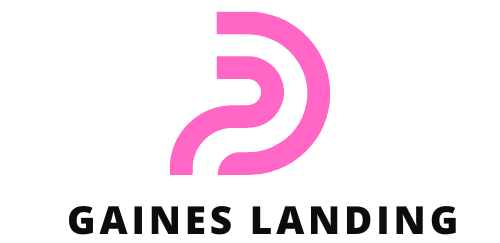What’s the Latest in Smart Grid Technology for Renewable Energy Integration?

Advances in technology have always been at the forefront of progress. In the quest to meet the rising demand for electricity, new developments are constantly being made. Today, one of the most revolutionary of these is the smart grid technology. Designed for the optimal use and integration of renewable energy sources, smart grids offer a variety of benefits not only to the power supply industry but also to us, the consumers.
The Essence of Smart Grids
Before we delve into the latest in smart grid technology, let’s first establish a clear understanding of what smart grids are. Imagine your electricity grid but with an extra layer of intelligence. A smart grid is an evolved grid system that uses digital communication technology to detect and react to local changes in electricity usage.
Also read : How to Develop a Public Speaking Program Using Virtual Reality Simulations?
A traditional grid would distribute electricity from suppliers to consumers with no direct interaction or feedback loop. A smart grid, however, employs innovative technologies to improve the efficiency, reliability, and sustainability of electricity distribution. And it’s not just about supply and consumption – integrated data management systems and automated responses are also key features of a smart grid.
The Role of Renewable Energy
The rise of renewable energy sources brings forth a paradigm shift in the electricity grid. Unlike conventional power sources, renewable sources such as wind, solar, and hydro aren’t consistent. Their output varies depending upon the time of day, weather, and other environmental factors. This inconsistency poses a challenge to the integration of renewable energy into the traditional grid system.
Topic to read : How to Create a Personalized Learning Experience with Adaptive Software?
A smart grid, however, is designed to handle these fluctuations efficiently. It can better manage and integrate renewable energy sources into the grid, ensuring a steady and reliable supply of electricity. Smart grids also enable consumers to become producers—those with solar panels or wind turbines can feed excess power back into the grid. Such decentralization and democratization of energy production offer significant benefits, from reducing reliance on fossil fuels to empowering consumers.
Smart Grid Technologies and Innovations
The integration of renewable energy sources into the grid is made possible by a host of smart grid technologies. Recent advancements have resulted in more efficient and reliable systems.
One of the most promising smart grid technologies is the Advanced Metering Infrastructure (AMI). AMI consists of systems and software that enable real-time data gathering, two-way communication between consumers and suppliers, and enhanced control over the power supply. This technology allows for better management of renewable energy integration, as well as more efficient and responsive electricity distribution.
Another exciting development is the Distributed Energy Resource Management Systems (DERMS). DERMS provide a platform for optimizing the operation of distributed energy resources, such as storage devices, solar panels, and wind turbines. They help coordinate and control these resources, ensuring that renewable energy is integrated smoothly into the grid.
Energy storage technologies, like advanced batteries and flywheels, are also crucial to the success of smart grids. They help balance the supply and demand of electricity and ensure the stability of the grid.
The Impact on Consumers
For you, the consumers, smart grids mean more control over your energy use and potentially lower energy bills. Smart meters allow you to monitor your power consumption in real-time, providing you with the data you need to manage your energy use effectively.
Moreover, the integration of renewable energy through smart grids could lead to more sustainable and affordable power options. For example, you could be generating your own power through solar panels or wind turbines and selling excess energy back to the grid.
It’s also worth noting that smart grids could help prevent or minimize power outages. With their advanced sensors and systems, smart grids can detect and isolate faults quicker, leading to fewer and shorter outages.
Transforming the Future of Energy
Undoubtedly, smart grid technology has the potential to transform the way we generate, distribute, and consume electricity. It’s about more than just integrating renewable energy sources—it’s about creating a sustainable, reliable, and efficient power system that benefits everyone.
As technology continues to evolve, we can only expect smart grids to become smarter. We should keep a keen eye on the developments in this field and be ready to embrace the changes they bring. While the transition to smart grids may be challenging, the benefits they offer make them a worthwhile investment in a sustainable future.
Demand Response Programs and Smart Grids
Now that we understand the role of smart grids in integrating renewable energy into our power systems and the technologies that are driving this shift, let’s delve into one of the key features of smart grids that have a direct impact on energy consumption: demand response programs.
Demand response programs are a crucial part of smart grid technology. They refer to the changes in power consumption by consumers in response to signals from energy providers. In simple terms, when the demand for electricity is high or there’s a strain on the grid, utility companies can signal this to consumers. Consumers, in turn, can reduce their energy usage during these peak periods.
For instance, on a particularly hot day, a lot of people would want to use air conditioning. This can put a strain on the grid. A demand response program could signal this strain to consumers who can then choose to reduce their air conditioner usage during this peak period.
The evolution of smart grid technologies, particularly real-time data gathering and two-way communication, has made these programs more efficient and effective. Now, consumers can receive real-time signals about grid demand and make informed decisions about their energy usage.
Furthermore, demand response programs facilitate better integration of renewable energy sources into the grid. They can help balance the variability of renewable sources by adjusting the demand to match the supply.
Grid Stability and Smart Grids
One of the significant benefits of smart grid technology is how it contributes to grid stability. With the integration of renewable energy sources, maintaining the balance between supply and demand becomes a challenge due to the intermittent nature of these sources.
Smart grids, with their ability to adjust in real-time and the inclusion of energy storage systems, can maintain grid stability even with the integration of renewable energy. Advanced energy storage technologies like batteries and flywheels store excess energy during periods of low demand or high production, and release it during peak demand or low production periods. This helps in balancing the supply-demand chain and maintains grid stability.
In addition, smart grids also have the capability to isolate and deal with problems swiftly and efficiently. In case of a fault or failure, smart grid technology allows for real-time detection and isolation of the issue. This not only prevents the problem from escalating and affecting a larger part of the grid but also ensures that power outages, if they occur, are limited and short-lived.
Conclusion: Towards a Future of Sustainable Energy
Smart grid technology stands at the forefront of a new age in power generation and distribution. With its advanced features like real-time data gathering, two-way communication, demand response programs, and energy storage, it is revolutionizing the way we consume energy.
What’s more, smart grids enable the integration of renewable energy sources into the grid, heralding a shift towards more sustainable and environmentally friendly power options. This is not just about providing a steady supply of electricity—it’s about creating a resilient, efficient, and sustainable power system that benefits everyone.
The future of smart grids looks promising. As we continue to innovate and improve upon this technology, we can expect grids to become smarter and more efficient. The transition may pose challenges, but the numerous benefits of smart grids make them a worthwhile investment for a sustainable future.
Let’s keep our eyes on the future of grid technology, as it can change the way we generate, distribute and consume energy. It’s not just about renewable energy integration—it’s about creating a world where sustainable energy is not just a possibility, but the norm.
